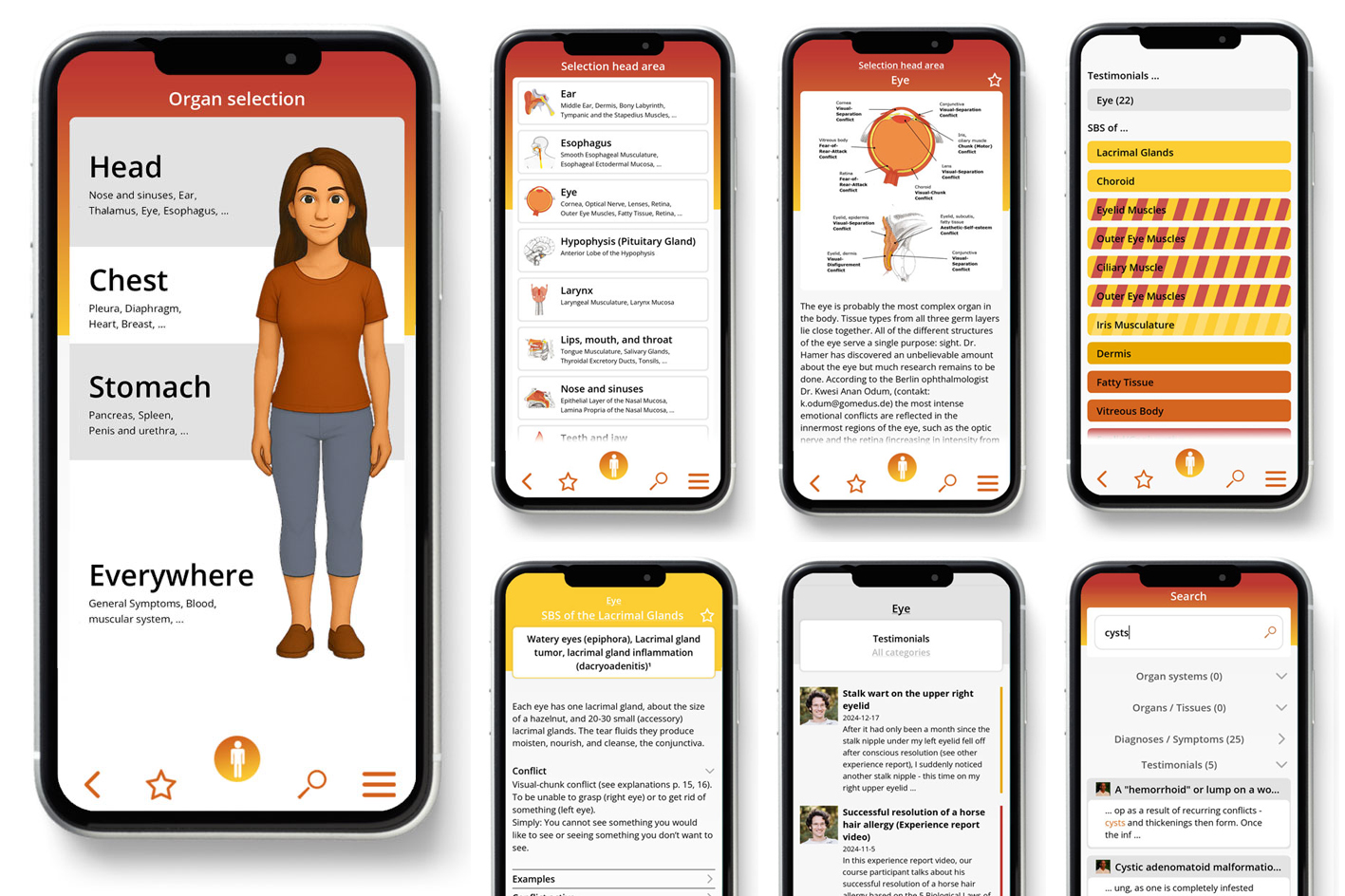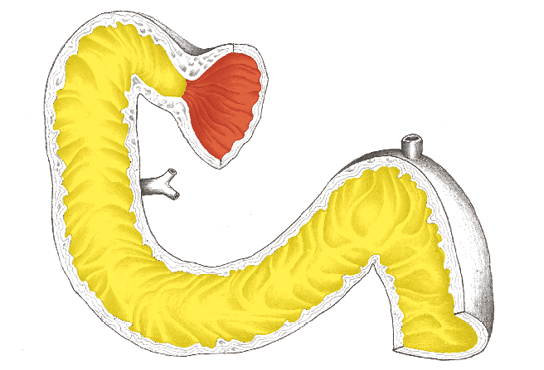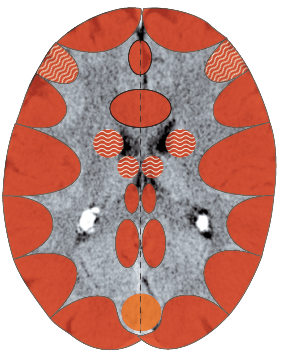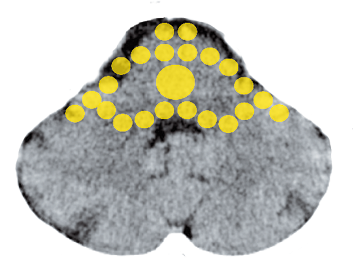 The information on this site is from one of the most famous books about the New Medicine (GNM / 5BN): "The Psychic Roots of Diseases" by Björn Eybl. Since September 2025, it is available in the form of an app with many additional features.
The information on this site is from one of the most famous books about the New Medicine (GNM / 5BN): "The Psychic Roots of Diseases" by Björn Eybl. Since September 2025, it is available in the form of an app with many additional features.It was written in german and was translated into more than 10 languages already. German is not freely available, as the rights are held by a publisher, but all these translations are available as ebooks / PDFs for free, as a gift of Björn for you, for the New Earth, for a new time.
In cooperation with Björn, it is splitted on "Disease is Different" into the sections by organ systems and combined with the real cases of our international testimonial / report archive of the related organ system.
SMALL INTESTINE – DUODENUM
The approximately 25 cm (10-15 in) long duodenum receives the food pulp from the pylorus, the “stomach‘s gatekeeper.“ The beginning of the duodenum widens into the duodenal bulb. The middle of the duodenum narrows to the papilla. Here, the ducts of the gallbladder and pancreas join. The duodenal bulb is lined with ectodermal squamous epithelium. However, the parts that are further “downstream,“ such as the rest of the small intestine, are made up of endodermal tissue.
Remaining Small
Intestinal Mucosa
Inability to digest
something

Duodenum Mucosa
(Squamous Epithelium)
Territorial-anger

Duodenal ulcer (ulcus duodeni), duodenal ca)
Corresponding with the germ layer order, this SBS is almost identical with the superficial stomach mucosa (see: p.233).
| Conflict | Territorial-anger conflict or, less often, an identity conflict (depending on sex, “handedness,” hormone levels and age). One is upset, because their territory or their territorial boundaries are violated. |
|---|---|
| Examples | ➜ Boundary dispute with the neighbor. ➜ A man‘s partner flirts with another man. He suspects that she is having an affair with him.  Following a prostate surgery, a man is impotent and can no longer satisfy his wife. Territorial–anger conflict > cell degradation in the active-phase, restoration in the repair phase. (Archive B. Eybl) Following a prostate surgery, a man is impotent and can no longer satisfy his wife. Territorial–anger conflict > cell degradation in the active-phase, restoration in the repair phase. (Archive B. Eybl) A now 53-year-old patient meets her husband while still at school. When she sees her future father-in-law for the first time, she is repulsed by the man = territorial-anger conflict and fear-revulsion conflict. She has suffered from bulimia for many years, dating back to this first encounter. Her relationship with her father-in-law is bad to this day. Whenever he comes to visit, he insists on taking her usual seat at the table. Moreover, he always seems aggravated and never says a word. The patient is also always aggravated that she has to give up her place because of his stubbornness = recurring territorial-anger conflict. Therapy: “reformat and reboot” – and don‘t invite him anymore. Drink raw potato juice. (Archive B. Eybl) A now 53-year-old patient meets her husband while still at school. When she sees her future father-in-law for the first time, she is repulsed by the man = territorial-anger conflict and fear-revulsion conflict. She has suffered from bulimia for many years, dating back to this first encounter. Her relationship with her father-in-law is bad to this day. Whenever he comes to visit, he insists on taking her usual seat at the table. Moreover, he always seems aggravated and never says a word. The patient is also always aggravated that she has to give up her place because of his stubbornness = recurring territorial-anger conflict. Therapy: “reformat and reboot” – and don‘t invite him anymore. Drink raw potato juice. (Archive B. Eybl) |
| Conflict-active | Increased sensibility, later, cell degradation of the affected mucous membrane, pain. The longer the conflict lasts, the deeper the defect in the tissue (ulcer) becomes. Usually a recurring conflict. |
| Bio. function | Through increased sensibility, one can better determine what is digestible or indigestible. |
| Repair phase | Bleeding of the healing ulcer (causing tarry stools), no pain. |
| Repair crisis | Severe colicky pain, heavy bleeding, possibly absence seizures, chills. |
| Therapy | Questions: see: p.213. Determine the conflicts and conditioning and, if possible, resolve them in real life if they are still active! See also: stomach remedies on p. 236. |

Duodenal cancer (adeno-ca), duodenal polyps1
| Conflict | Chunk conflict (see explanations p. 15, 16). Not being able to digest something. |
|---|---|
| Examples | Examples ➜ Aggravation with family members, fellow workers, friends. ➜ A woman must care for her mother day and night. She cannot enjoy the retirement she had been looking forward to for a long time. |
| Conflict-active | Growth of a cauliflower-like tumor of secretory quality or a flat-growing adeno-ca of absorptive quality. Usually a recurring conflict. |
| Bio. function | With more intestinal cells, the lodged chunks (of anger) can be better digested or reabsorbed. |
| Repair phase | Tubercular, caseating, necrotizing degradation of the tumor via acid-resistant fungi and bacteria (mycobacteria). Mild fever, night sweats, duodenal inflammation or tuberculosis. If mycobacteria are not present: encapsulation of the tumor. |
| Questions | First, based on the symptoms, determine if the conflict is active or in the repair phase: If it is active or recurring: Diagnosed when? (Conflict probably significantly earlier). What happened during the time period in question? Which stress situations were there? Which chunk was I unable to digest? What put pressure on me? Which situations act as triggers for me? Which events related to this can I remember from my childhood? Is there further conditioning: pregnancy, parents’/ancestors’ experiences? |
| Therapy | Identify the conflict or triggers and, if possible, resolve them if they are still active. Guiding principles: “I will make peace with myself and my family.“ “Whatever has happened certainly had a purpose.“ Possibly surgery, better sooner than later. See also: remedies for the colon, p. 209. |
1 See Dr. Hamer, Charts p. 22
Duodenal bleeding, tarry stool
Possible causes
- Duodenal ulcer – Repair phase: the healing duodenal ulcers bleed. Pain and heavy bleeding in the repair phase crisis. Tarry stool.
- Adeno-ca – Repair phase: tubercular, caseating, necrotizing degradation of the tumor via acid-resistant fungi and bacteria (mycobacteria). Fever, night sweats, bleeding. Pain and severe bleeding in the repair phase crisis.
Note
Blood-thinning medication (anticoagulants) aggravate the bleeding.
Therapy
The conflict is resolved. Support the healing. With severe bleeding, monitor the blood count > possibly limited transfusions, see also p. 203.
Meckel‘s diverticulum (bulge in the small intestine)
This diverticulum is considered a remnant of the omphalomesenteric duct or yolk sac and thus, it is unclear as to whether it has a conflict cause.
All experience reports on the organ system „Small Intestine – Duodenum” from the International Report Archive:
| Author | Title and Overview | Keywords |
|---|
